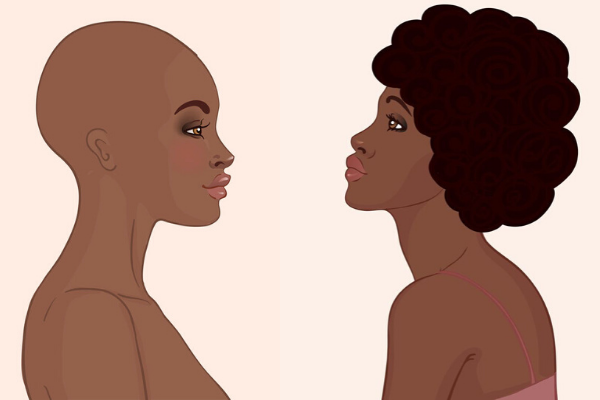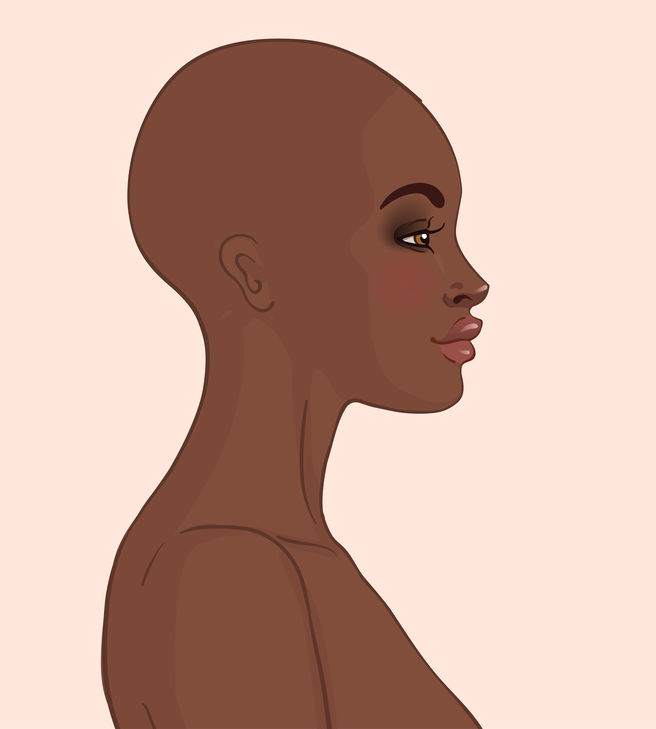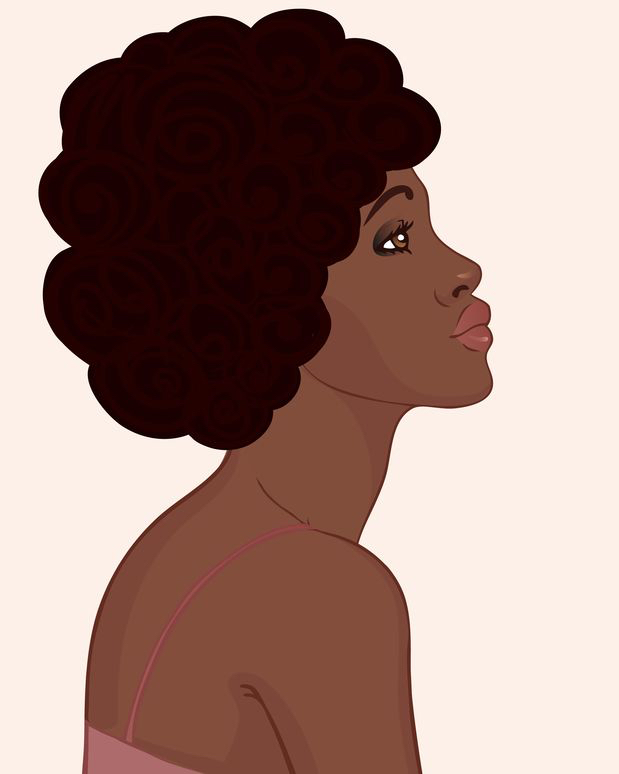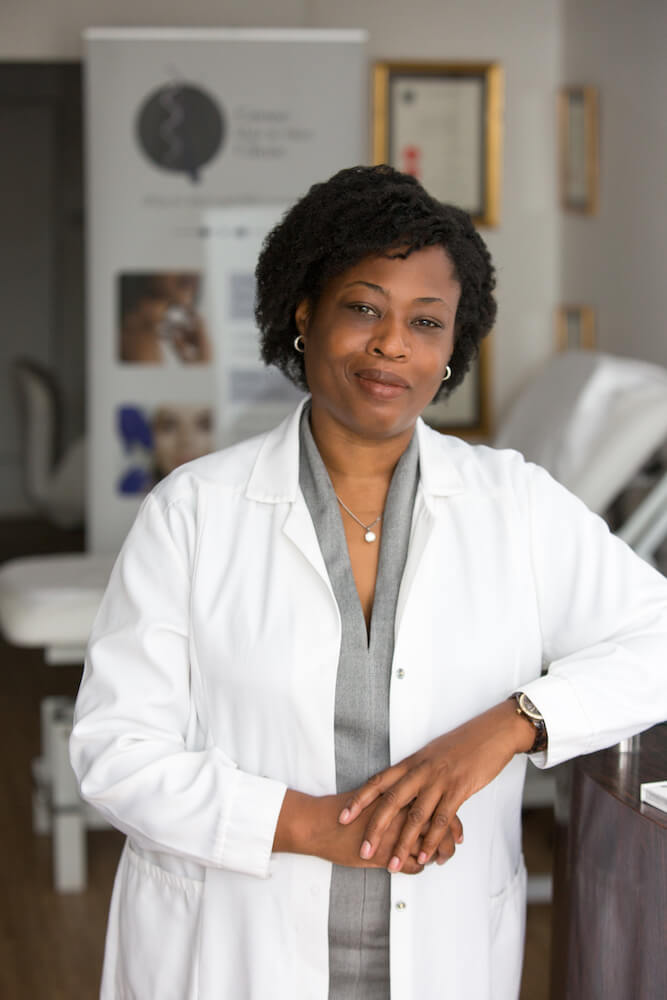Following her own personal experience of hair loss 20 years ago, Dr Ingrid Wilson, a GP at the time, embarked on further training to boost her knowledge on how to better support patients undergoing hair loss. Today, she is a qualified Trichologist, GP and founder of Crewe Hair and Skin Clinic. Who better to ask the burning questions we all have about hair loss and how we can treat symptoms?
Dr Ingrid Wilson’s interest in hair loss stems from when she had to personally deal with the condition herself 20 years ago. She attributes her case to stress and her hair care practices at the time. She describes: “Fortunately my hair grew back but as I consulted with my patients as a GP, I realised I needed to be better equipped to help them with any hair loss issues. Generally, GPs receive very little training on it.”
After undertaking a two-year Trichology course with the Institute of Trichologists in London, she now feels confident about diagnosing hair loss conditions and hair processing.
Her unique skill set means that she in the rare position of being a regulated doctor able to prescribe for this issue, working in the same field as unregulated Trichologists who while not being able to prescribe, help people to understand many common hair loss conditions.
Taking things one step further, she took the opportunity to found her own hair and skin clinic. In the feature below, she harnesses all of her expertise to answer questions about hair loss and how to treat some symptoms.

What are the main types of hair loss?
There are many different reasons including hair loss due to genetics, nutrition, stress, medications and diseases. Hair loss can be temporary or permanent. However, the most common reason is balding related to age, sex and hormones.
“Avoiding traumatic hair care practices particularly those that incorporate heavy braids after a relaxer can help to slow down the hair loss.”
What are some of the main causes of hair loss among Black women?
Hair breakage: (acquired proximal trichorrhexis nodosa – APTN). This is when hair is so fragile that even minor trauma such as combing the hair or putting it in a particular hair style may break the hair. It tends to happen after years of using chemicals and heat devices to straighten the hair, and excessive combing with the wrong kind of comb, especially when the teeth are too small and rough or brush. Sometimes it can be the first sign of a problem that is more common in Black women called CCCA.
CCCA (central centrifugal cicatricial alopecia): This condition starts at the top and middle region of the scalp and progresses outward. It is a potentially permanent form of hair loss that primarily affects people of African descent, and usually occurs more in women than men. Last year, it was discovered that there is a gene mutation called PADI3, which typically runs in families. Avoiding traumatic hair care practices particularly those that incorporate heavy braids after a relaxer can help to slow down the loss.
Traction alopecia. This type tends to happen after tight pulling hair styles and hair pieces which cause repeated pulling (traction) on the hairs. What you see is shortened hairs at the temples and at the front.
Ophiasis alopecia areata. This type is often underdiagnosed in Black women because there is a tendency to diagnose it as traction alopecia. You would tend to see a horizontal band of hair loss at the back and sides of the hairline.

What are the common treatment solutions?
Treatment solutions depend on what the condition is. Sometimes several conditions can exist in the same person. The treatment solutions also depend on who the patient sees. GPs are often the first port of call, but they receive very little training on this issue before they qualify.
I have devised a range of solutions in my clinic for various hair loss conditions, with agreement from my insurers on a list of medications that I can prescribe for these conditions. This is quite a unique approach for somebody with a GP background working in the private sector.
“The first step is to avoid further traumatic hair care practices”
What would you recommend for general balding?
The first line of treatment that I would offer is to use the medication: minoxidil topically. My clinic offers a formulation from a pharmacy which is in a foam solution to help support hair growth. It is recognized that this will not work for everyone, so I offer other solutions based on evidence. There is some evidence that platelet rich plasma therapy, which the clinic offers, is also beneficial for hair growth.
What if the problem is traction alopecia?
The first step is to avoid further traumatic hair care practices. This can be challenging as not all hairdressers are familiar with styling natural Afro textured hair. If the hair doesn’t grow back, there are other options.
How would you treat central centrifugal cicatricial alopecia – CCCA?
I would direct the person to a consultant dermatologist who specializes in hair, as this type of hair loss is permanent. Some dermatologists may be willing to try steroid injections or other treatments. Waiting times in the NHS for this specialist can be long, so I would also give personalised advice on the hair care regime needed, advise on antifungal shampoo to use, and prescribe as appropriate. This could include an appropriate antibiotic, steroid cream or topical minoxidil.

What would you say to someone who is suffering hair loss issues in silence?
Unfortunately, there is still a stigma around this. Your hair tells the world about your identity, aspirations, culture, health and age. So, when somebody experiences hair loss this can be devastating and profoundly affect their way of life. If someone is suffering in silence, I would suggest that they invest in themselves and make an appointment to see a specialist, like myself. I have been trained to manage all hair types, but I am very aware that there is not very much information that is easy for the typical UK GP to find around hair loss in Black women.
I would also recommend not rushing to get a hair transplant because although it is a good solution for some forms of hair loss, if the underlying cause of the problem is not correctly diagnosed it can sometimes make the situation worse.
“When somebody experiences hair loss this can be devastating and profoundly affect their way of life.”
How can DNA testing help to diagnose hair loss?
The Fagron Trichotest is a DNA test which analyses gene variations and lifestyle factors so that personalized hair loss treatment can be recommended. Studies show that there is a direct relationship between your genetic profile and lifestyle and the effectiveness of treatment. The unique analysis performed by the test means options can be identified which are most likely to improve hair loss treatment. This test is offered at my clinic.

What does the process involve?
DNA from saliva is used together with information about your lifestyle. The process is simple and starts with obtaining a sample from inside the mouth. At the appointment an online questionnaire is completed detailing a number of lifestyle factors. This will be sent to the laboratory. The technicians will analyse a total of 48 genetic variations in the DNA sample, this will enable understanding of the specific characteristics of your metabolism which contributes to your hair loss.
Within 14 days the results of the test are received, these would indicate which elements from genetic coding and lifestyle factors are contributing to hair loss.
Melan readers can get 20% off the clinic’s iRevive treatment on Treatwell until the end of March 2020.
Contact details:
Crewe Hair and Skin Clinic
www.crewehairandskinclinic.uk
The clinic is by appointment and open on Tuesdays, Fridays and Saturdays.
Landline: 01270 747 393
Email: info@crewehairandskinclinic.uk
Book an appointment via the Treatwell App












